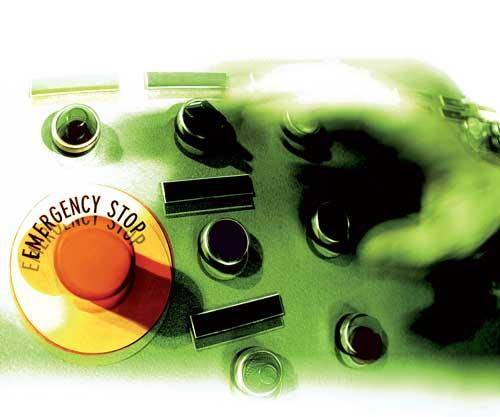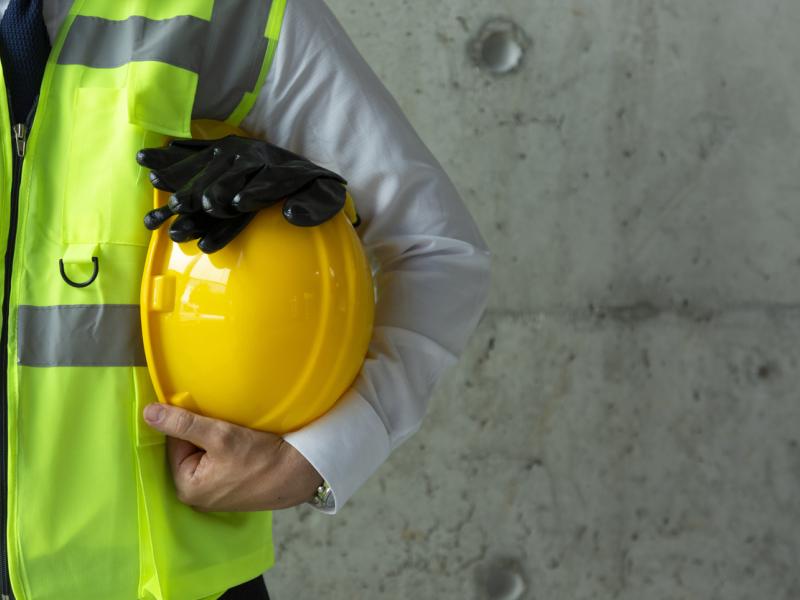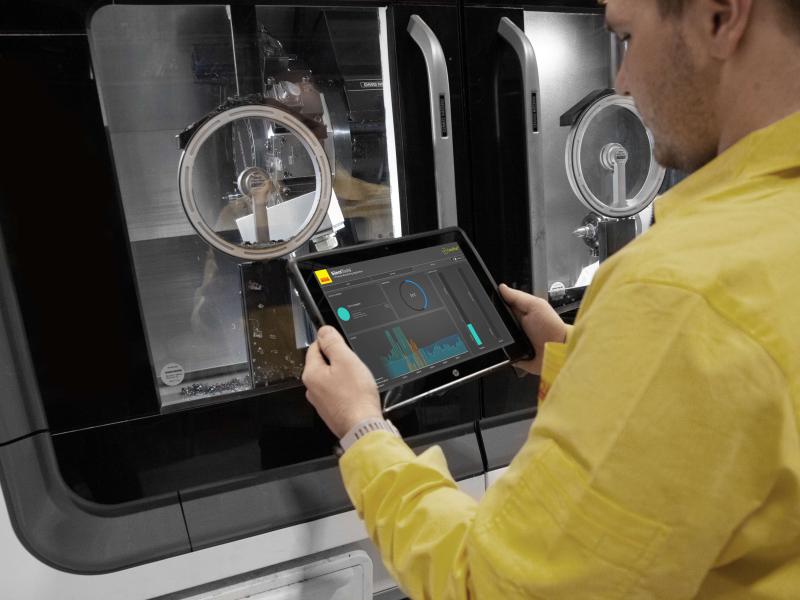The Department of Labour recorded 26 fatalities in the manufacturing sector between 2005 and 2010. And in the 2009 to 2010 year ACC approved just over 333,000 new claims from this sector. Almost 2500 claims received in that period of time were machinery-related. Editor Stefan Richter asked Tony Catterson, Pilz Safe Automation’s NZ Manager, where these alarming numbers come from and what to do about it.
Statistics tell us that New Zealand is a quite dangerous place to operate a machine. Here are some incidents taken from recently-issued Department of Labour press releases: A female worker at a cheese processing factory was clearing a jam in a cheese packaging machine. Unaware that the machine was set to reactivate, she put her arm in to clear wrapping from clamps when they closed on her middle finger and amputated the tip. Her employer has been fined $50,000 and ordered to pay $12,500 in reparation. According to the Department of Labour it would have cost $500 to make the company’s two unguarded wrapping machines safe.
A producer of snack and muesli bars has been fined $28,125 after an employee of a contractor had part of his finger amputated. The employee was trying to clear peels from an opening at the bottom of a peel dicer machine when his left index finger came into contact with the auger’s blade. His finger was amputated below the fingernail. The Department of Labour says that this injury could have been avoided if there had been a guard fitted at the bottom of the machine to prevent the employee’s fingers coming into contact with the blade.
A sawmill employee was using a drop saw to cut regulated lengths of timber. The stopper on the machine kept moving resulting in longer pieces of timber than was required, and therefore needed trimming. While re-cutting the timber, the employee leaned over the machine to reach and remove the off-cuts. Unfortunately he lost his balance and stepped on the unguarded foot pedal, causing his right hand to become clamped in the drop saw. Neither the foot pedal nor the circular blade had any form of guarding, and the employee had not received adequate safety training for using the saw. His thumb, middle and ring fingers were amputated and his index finger was fractured.
My machine is safe – or is it?
It’s a no-brainer that a machine can´t be safe when there are no safeguards in place. But even installed safeguards don’t necessarily cover all potential hazards throughout the machinery lifecycle. “Many people perceive a machine to be safe because it has a few safeguards on it. But when these safeguards don’t take into account the different environments a machine is being operated in they don’t fully protect people,” says Tony Catterson, NZ Manager, Pilz Safe Automation. In a lot of cases only the machine operator is taken into consideration. “But what about the maintenance staff doing the set-up of a machine? The maintenance guy might disable or bypass all the safeties that are on the machine to do the work he needs to do. In this case he isn’t protected at all. And sometimes those bypasses are left in place. People get complacent or just forget about it.”
Another potential source of danger is people assuming a machine is safe only because they have bought it off an European manufacturer. “In Europe the machine might be equipped with automatic infeed and outfeed, and mainly produce one specific item, so that there are no frequent adjustments and no one is ever exposed to the corresponding hazards,” explains Tony. “But here in New Zealand the machine might be fed and unloaded manually, and frequent change of products might require ongoing set-ups. So there are some safeguards in place, but they just don’t match the higher level of human exposure to potential hazards. People assume that just because a machine has a CE marking it’s going to be compliant. That’s a dangerous assumption.”
Very often staff don’t fully understand why safeguards were installed in the first place, because the process hasn’t been documented properly. “Somebody had an accident or a near miss, and the company puts some safeguards on the machine, without going through the process of performing a hazard ID and a risk assessment, and then coming up with a combined approach of installing suitable safeguards and upgrading administration controls to work hand-in-hand with them,” says Tony. “Without this documentation process, nobody can remember why certain decisions have been made and understand how the new safeguards are going to impact on the workplace.”
Promoting safety in New Zealand
Pilz New Zealand is swiftly approaching their tenth anniversary. “The market has changed quite a bit over the last decade,” recalls Tony. “When I started with Pilz ten years ago, people used to think it to be sufficient to just put an emergency stop on the machine. Safety requirements box ticked. But meanwhile companies are slowly recognising they do need to look at safety more closely. They are being pushed towards that topic from different directions.”
The strongest promoter of machinery safety is the Department of Labour. The Health and Safety in Employment Act 1992 asks employers, machine designers, manufacturers, and importers to identify potential hazards, conduct risk assessments and make practical steps to improve safety. “Unfortunately many people still neglect doing a hazard ID and a risk assessment and prefer to get a quick fix to resume production as soon as possible. People are aware of the obligations they have, but sometimes they don’t know where to turn to and what to do; they ignore it and put it into the too-hard basket. Others just think ´We never had an accident so we are not going to have one.` Anyway, the Department of Labour still find a large number of people not fully complying with the safety standards and regulations.”
To change this situation, the Department has developed the Safe Use Of Machinery Project as part of the Manufacturing Sector Action Plan to 2013. This Sector Action Plan is one of five plans targeting sectors with consistently high levels of workplace injury, disease and fatalities – construction, agriculture, manufacturing, forestry, and fishing. The Safe Use Of Machinery Project aims at lifting the standard of machine guarding in New Zealand. Health and Safety Inspectors are focusing on raising awareness amongst employers and employees of the importance of machine guarding and checking that effective procedures and systems are in place to ensure the safe use of machinery in the workplace. “The manufacturing industry´s awareness of safety issues is also being increased by big companies such as Fonterra, Goodman Fielder, Bluebird and Progressive Enterprises. They are raising the bar in areas such as safety training and expectations as to what levels of safety must be installed on a new machine, and the smaller companies are following and starting to think about safety as well,” says Tony. “And there is also a greater awareness in the workforce; they expect to be properly protected from harm at their workplace. Many labourers have seen the levels of safety in various companies, and can tell when safeguards and standards are not up to scratch.”
Pilz is another strong promoter of machinery safety in New Zealand. “Pilz has a background in machinery safety for such a long time, and we have always been a leader in safety technology,” says Tony. “More people at Pilz work in R&D than they do in sales and marketing. We were the first to come out with safety relays, a safety PLC, a safety fieldbus and also a safe 3D camera system to monitor the zone around a machine. But it’s not only about selling our products, we also have a passion for people to get their safety right.” Tony says that Pilz has discovered that quite often people don’t know what components they actually need or how to apply them properly. They might be buying components and installing them, but they are not working the way they should. “We have positioned ourselves as a partner of the industry, making sure companies are applying our products properly to achieve the desired results. Working with companies to understand how an accident could have possibly happened, we have seen the impact a fatality has on a workplace. Being able to offer a solution to keep them safe in future is very satisfying, and we are enjoying our job.”
Pilz’s safety related services
The company Pilz is undergoing a transformation – from a vendor of safety components to a safety service and solution provider. “We offer customers to do the hazard ID and the risk assessment first. Then, based on the outcome, we come up with a comprehensive safety concept which takes into consideration every aspect associated with the machine operation, including the set-up, the maintenance and the cleaning. We assist with the detailed system design and implementation, and then we finally validate the safety system to prove that the installed safeguards are actually doing what they are supposed to do.”
Another service offered by Pilz is safety training. “You can’t get trained in machinery safety in NZ. And even globally there’s very few places that offer specific training on that topic,” explains Tony. “If you are trained as a health and safety person, you are not trained about the machinery, but about the processes. And the functional safety courses focus on process control of plants and equipment. So it’s left to the engineering staff to deal with machinery safety, but there is no training in the engineering degrees and the trade qualifications.
We are having great success with our machinery safety training programmes.” Pilz works with many big companies and also with the Department of Labour. “Only last week I was doing a refresher training section for some of the Department´s inspectors. They also ask our advice on questions of machinery safety. And Pilz has actually just introduced a certified machinery safety expert course which is TUV approved. That’s something we are going to roll out globally. At the moment we are working on how to adapt this new course to the NZ framework.”
According to Tony the immediate future of safety systems holds developments similar to those of standard control systems. “We can already achieve a lot of standard functionality in a safe control. In the future, safety systems are becoming more decentralised and user-friendly, easier to set up, and ready for plug and play. Motor controls are being equipped with more safety functionality. Improvements on our safe camera system will help detect a person quicker and stop the machine faster, so that the safeguards can be set up closer to the machine. To reliably and quickly stop the machine when something is not right, and to be able to find out what went wrong, it is very important for the safety system to provide a large amount of diagnostic information. The more information is available the faster any faults can be rectified saving machine downtime.”






